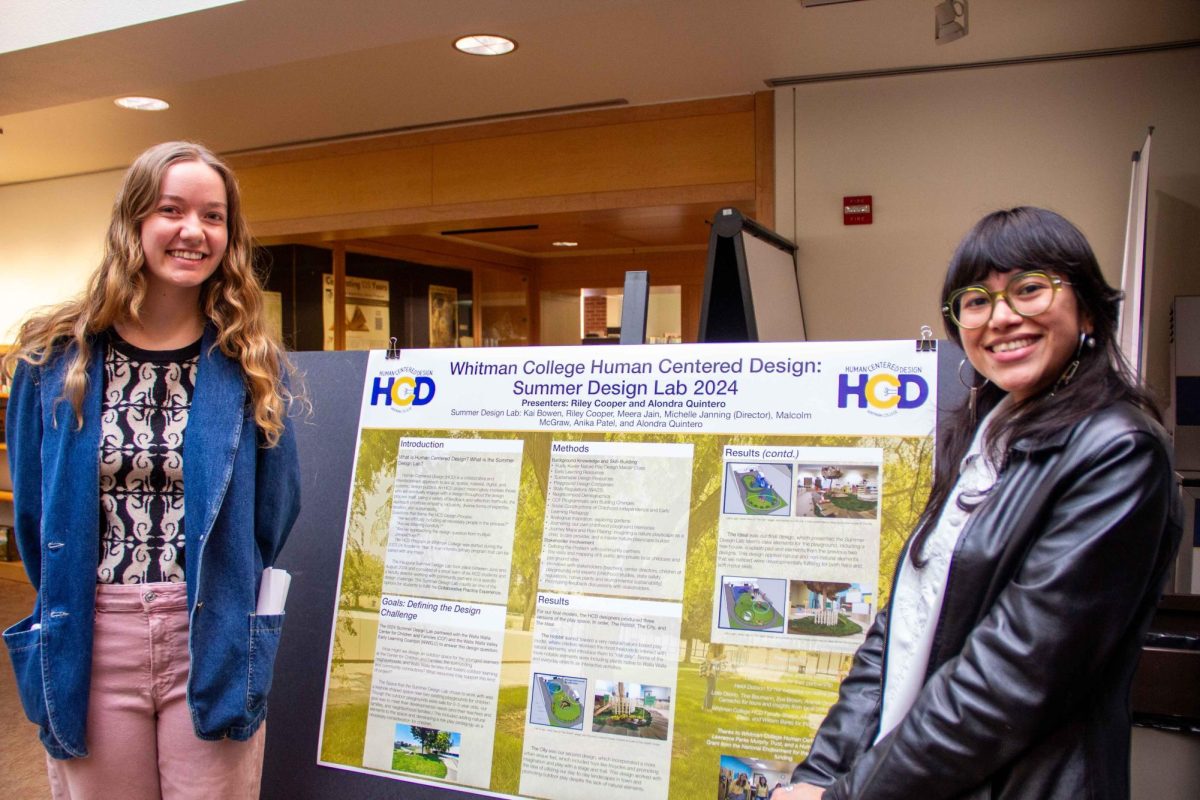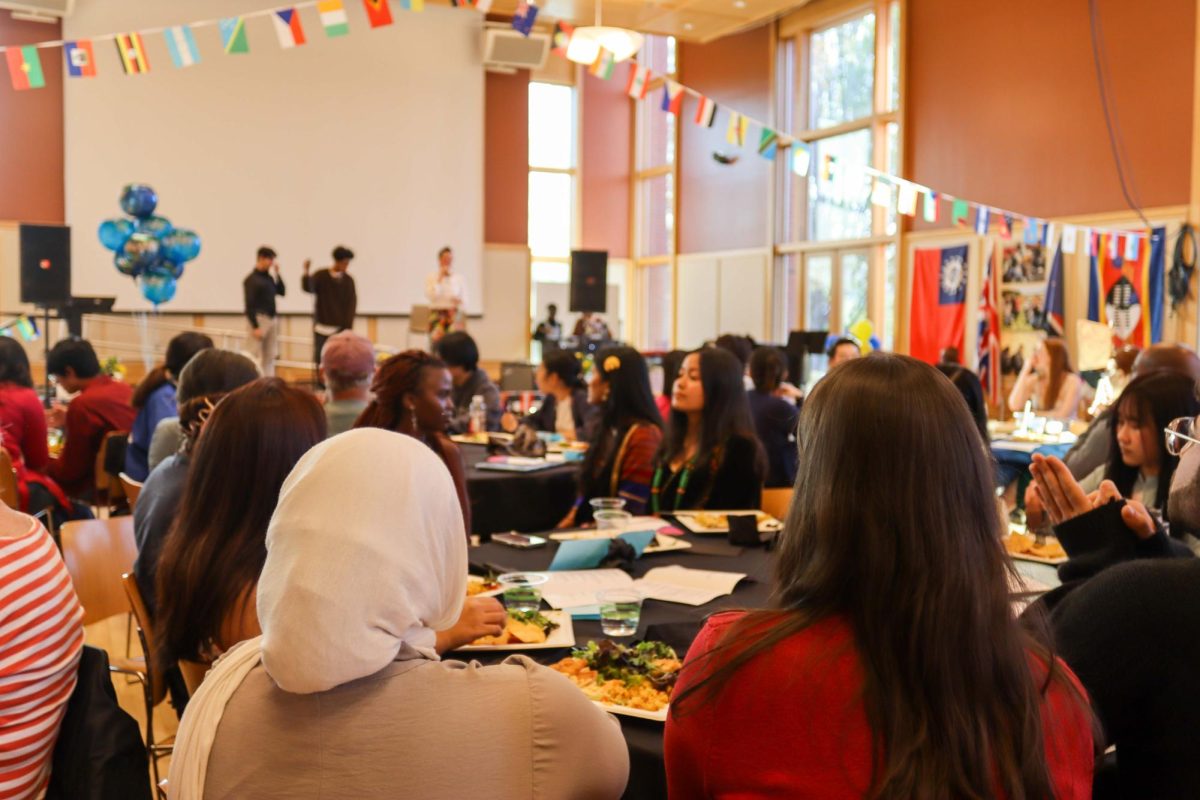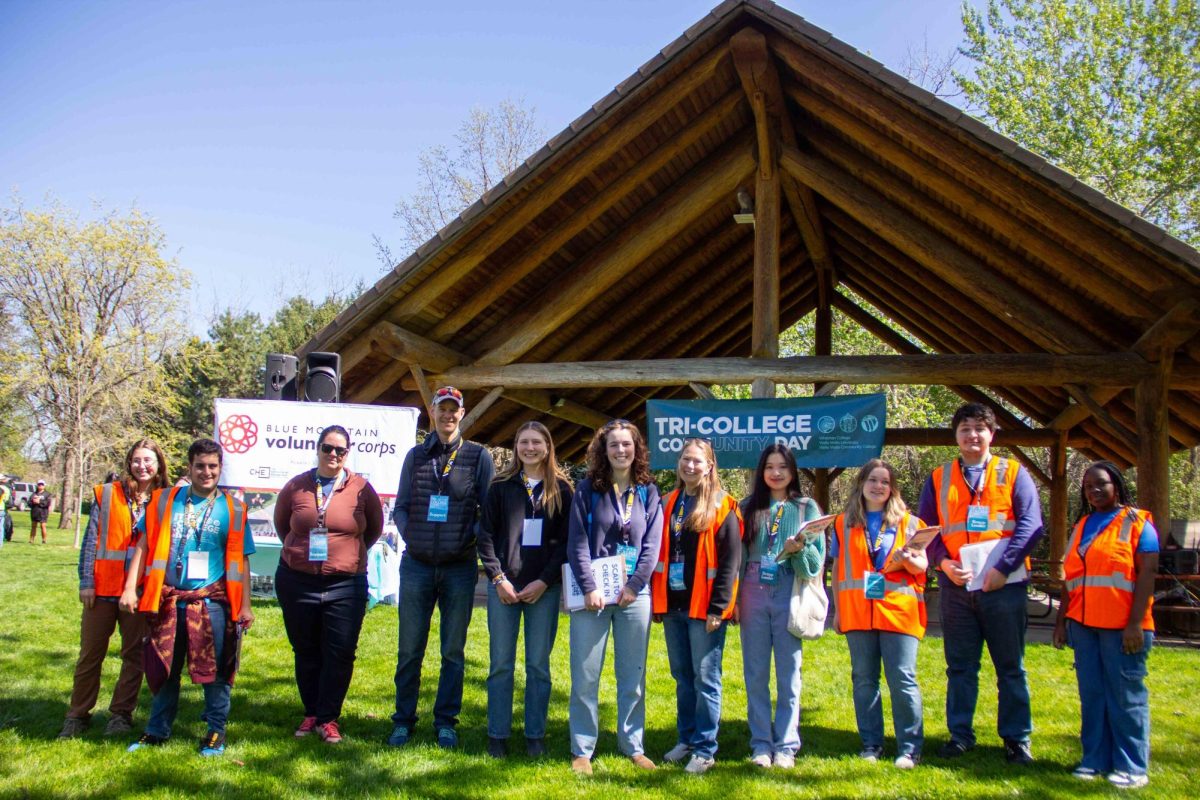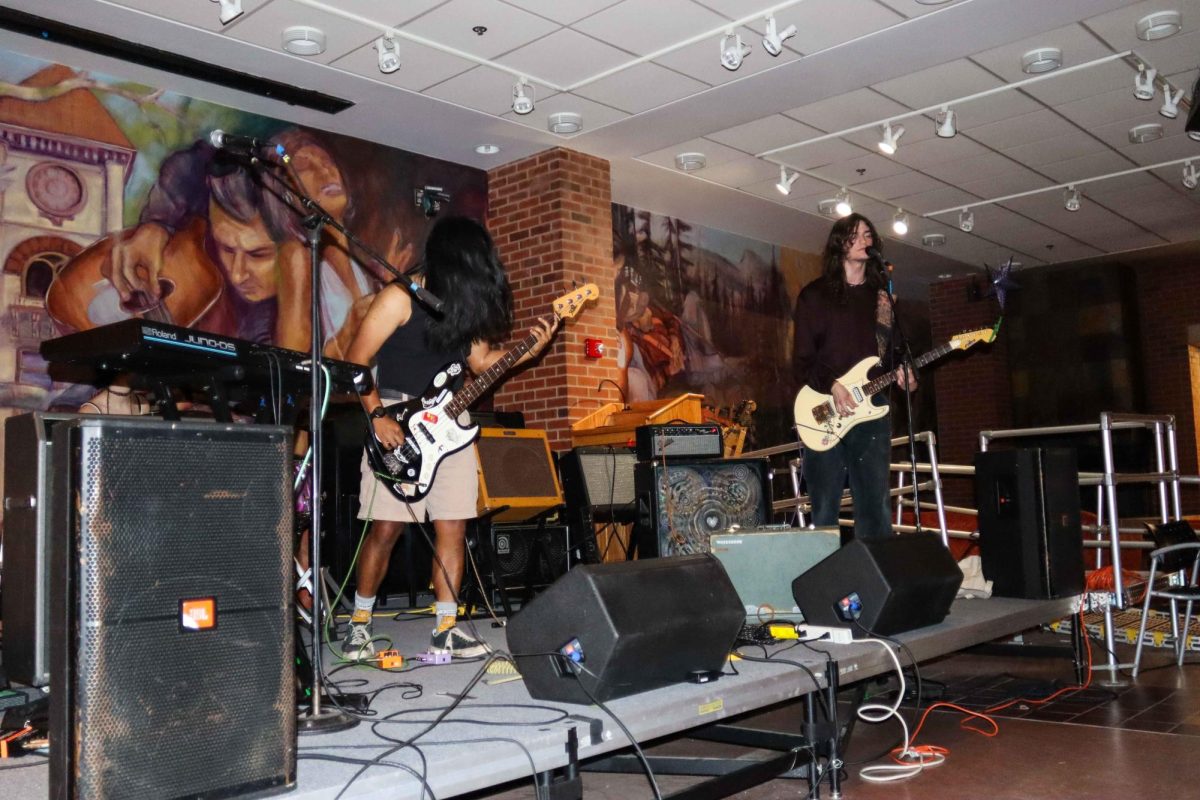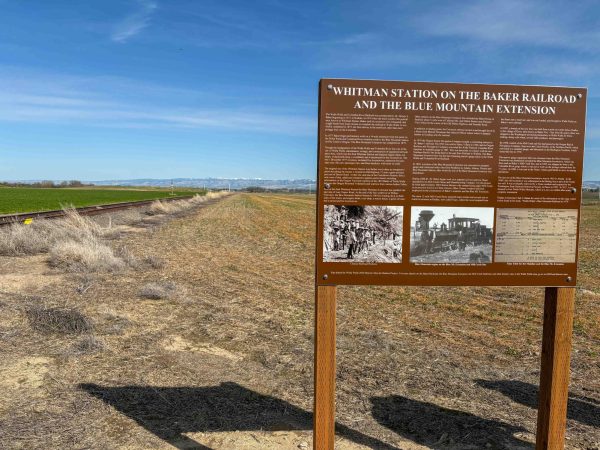
Last Saturday, historians, railroad enthusiasts and Whitman alumni gathered for a dedication ceremony at Last Chance Road. This is where Walla Walla 2020, a local organization, unveiled a new sign designating a portion of the original railroad as a historic site. Former Whitman Professor Clark Colahan, who published his book “Walla Walla’s Blue Mountain Railroad in 1879” about the railroad, Daniel Clark ’65, and others spoke before the dedication. The presentation focused on an unfinished portion of track which was left out of public knowledge before hobbyists and historians rediscovered the line. The ceremony and signage were provided by Walla Walla 2020, which expands initiatives to recognize historic sites in and around Walla Walla.
For many of the attendees of Saturday’s event, the Walla Walla Railroad represents a point of personal interest as well as a connection to regional history. Sam Pambrun, a regional historian working with the Frenchtown Historical Foundation, discussed the railroad’s impact on shaping various cities in Southeastern Washington and Northeastern Oregon in the late 1800s. Pambrun claimed the tracks to Walla Walla connected the city to industries in Oregon, creating commercial ties.
“The whole thing was about economics; it was the matter of getting the miners to go through Walla Walla and buy their supplies in Walla Walla,” Pambrun said.
Pambrun explained that railroad history in the Walla Walla area also represents a history of connection, reminding us of the spread of regional industry.
“It’s personal, and it’s local, and you can take these roads, you can take the railroads and see the development of communities,” Pambrun said. “So, as we put the railroad through the communities, you start building the communities up, then you want to connect them with roads.”
The portion of unfinished tracks recognized at the dedication ceremony were part of an effort to connect Walla Walla to Wallula, with the goal to transport farming products or tools to Portland, Oregon. This history was not just one of commerce and transport, but was also populated by developers, surveyors and residents brought to the area to plan the railroad. The presentation included names like the Boyers and the Bakers, who initially funded the Walla Walla Railroad and whose surnames still appear on Walla Walla street signs. The local history of the railroad is still present in the city of Walla Walla, and to the historians and railroad enthusiasts at the dedication ceremony.
For Daniel Clark, the official sign, which describes the construction timeline for the track, brings this history back to life. He hopes that the sign on Last Chance Road will connect people with regional history by educating passersby about the landscape.
“I love to know Walla Walla history. I love to help people go to the sites where it happened; that’s the purpose because it’s still in the air in a sense,” Clark said.
Clark was not the only person imagining scenes of the past as a part of our present at the event. Colahan echoed Clark’s idea, pointing to the empty fields around the road and envisioning the foundations of the railroad.
“If you were here in 1880, this all would have been covered with buildings, with sheds, with workshops,” Colahan said.
Marking history like that of the railroad then becomes an imaginative endeavor in addition to field research. As Colahan pointed out his vision of the past, Randy Reese, who hiked the original rail line searching for evidence of its existence, traipsed the field behind the new sign and guided event attendees to the areas where he found old rail spikes from the 1880s railroad. While Reese outlined the historical site and his findings, Clark explained that events like the sign dedication make history accessible and interactive as they revive and teach the past.
“I help people go where this happened or where history took place,” Clark said. “[Signs like this] help it stand up and walk — that history.”
The railroad dedication at Last Chance Road commemorated more than the interests of a handful of local historians. The sign posted on the road, in addition to the ceremony held to unveil the historical site, brought attention to a local history that any Walla Walla resident has access to. By walking past inactive tracks running through Valencia and Bonnie Brae streets, or in front of the Baker Ferguson Fitness Center, residents interact with Walla Walla’s railroad history.



